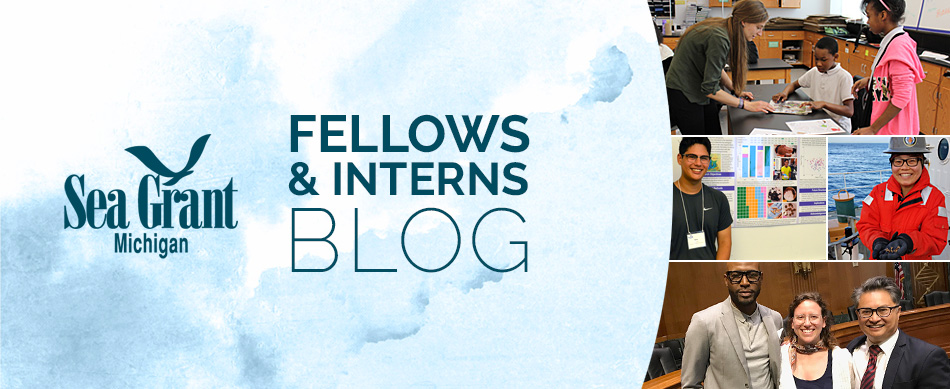
My, how time flies! There are only a few weeks remaining in my fellowship at the Great Lakes Commission, and I’m busy trying to finish up my work in between traveling. Given all the interesting experiences I’ve had since my last post – including the opportunity to visit Capitol Hill to advocate for Great Lakes priorities in February, and planning and conducting a workshop on the Ecological Effects of Wind Energy in Indianapolis in March – it’s hard to select just one topic to write about. But I think I’ll focus on the project that I’ve had the most involvement in during my time here: a partnership with the Michigan DNR, DEQ and other groups to build capacity for the management and control of invasive phragmites.
Non-native phragmites is a tall, aggressive wetland grass that has invaded many coastal areas in the Great Lakes region. This invasive species seriously impacts native biodiversity, habitat quality and human uses such as recreational access and lake views. In response to this issue, the Commission worked with various partners to plan and convene Phragmites Invasions in Michigan: A Symposium to Build Capacity for Management, held March 28-30, 2011. The symposium was attended by over 120 stakeholders representing diverse sectors. I was fortunate to be involved in every stage of planning this event, and was asked to present on the results of a state wide questionnaire we conducted on invasive phragmites management and control.
What really struck me at the symposium was the level of local engagement and commitment to combating invasive phragmites. Ordinary citizens across the state, with day jobs unrelated to natural resources management, are turning their concern about this invasive species into decisive action. These “local champions” are giving countless hours to galvanize their communities, educate their neighbors, and seek resources to control phragmites along their shorelines.
In my Environmental Policy class at graduate school, we learned about “wicked problems” in which stakeholders disagree on the definition of the problem, values are in conflict, and a large community will be required to resolve the issue. I never truly understood the nature of a wicked problem until I became involved in invasive phragmites management in the Great Lakes region. Although most who attended the symposium shared a desire to eradicate invasive phragmites, I was surprised at how frequently participants’ values differed. Some felt strongly that herbicide use was damaging the ecosystem, and that phragmites should not be treated without a clear plan for ecosystem restoration and a strong likelihood of success. Others felt that eradicating invasive phragmites was always justified, even if other invasive plants moved in after treatment. Although most symposium attendees spoke of private landowners willing to cooperate to control phragmites, I was amazed to hear that some landowners want to keep infestations on their property to serve as privacy screens.
There is no simple answer to the invasive phragmites problem, but what I have taken away from this experience is this: The 120 participants at the symposium were not daunted by the immense challenge of invasive phragmites. I believe the commitment and strength of local communities, combined with the resources and knowledge of environmental professionals, can overcome just about any wicked problem.
- Julie, GLC Fellow 2010

